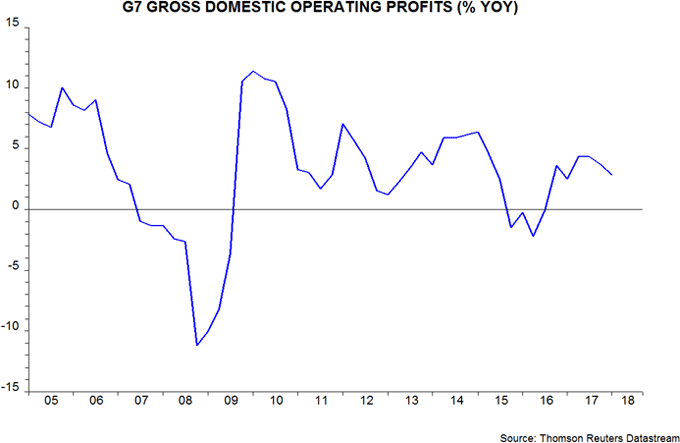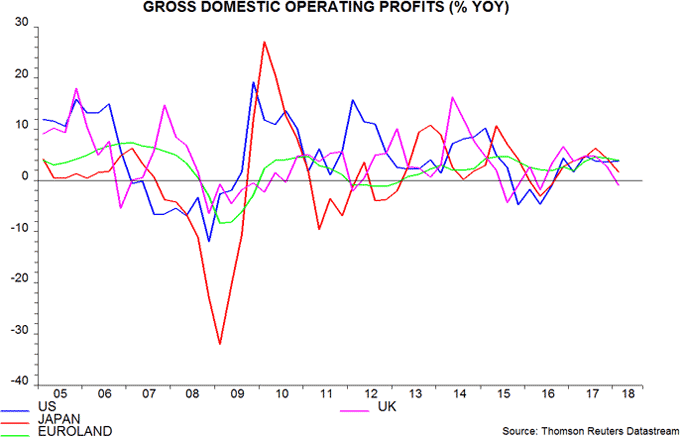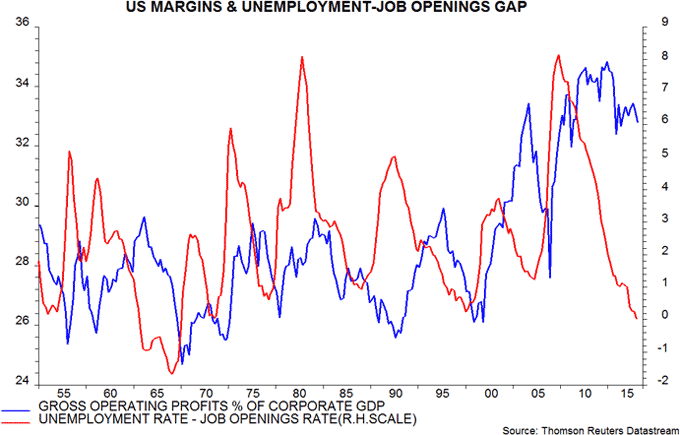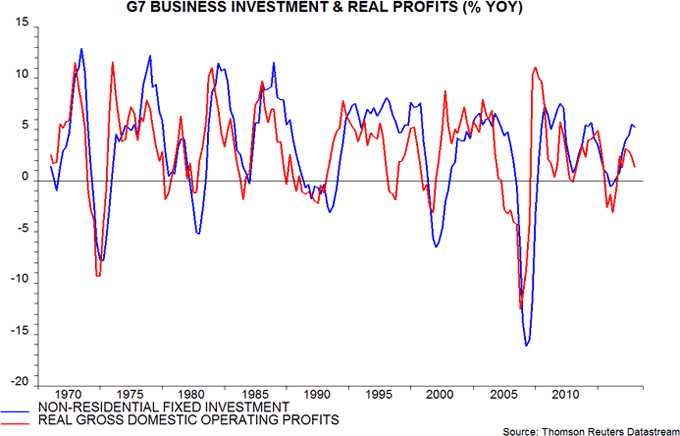Are the profits / investment cycles peaking?
Underlying profits growth in the G7 economies cooled in the first quarter of 2018 and is modest by historical standards, casting doubt on expectations of economic strength based on a further pick-up in business investment.
The underlying profits numbers are from the national accounts and refer to the gross domestic operating surplus of corporations (or the closest available measure), which is equivalent to “EBITDA” (i.e. earnings before interest, tax, depreciation and amortisation). The G7 series is a GDP-weighted average of country data. Annual underlying profits growth was 2.8% in the first quarter of 2018, down from 3.7% in the fourth quarter of 2017 and below an average of 3.8% since 1995 – see first chart.

The G7 series has been dragged down by slowdowns in Japan and the UK. Euroland profits growth has also eased, while US growth has been stable but modest – second chart.

Post-tax US profits, of course, have been boosted by recent tax changes, growing by an annual 8.9% in the first quarter versus 3.9% for the pre-tax measure. Tax cuts, however, are less likely to feed through to business investment if underlying profitability is deteriorating.
Operating margins in the US and several other G7 countries are under threat from rising unit wage cost growth due to stretched labour markets and weak productivity trends. The gap between the US unemployment and job opening rates is an indicator of labour market slack and has displayed a leading relationship with margins historically, with the current message very negative – third chart.

Annual growth of G7 real underlying profits (i.e. current-price profits divided by the GDP deflator) is correlated with, and usually leads, annual business (i.e. non-residential) investment growth. Real profits growth appears to have peaked in the second quarter of 2017, suggesting that investment growth is at or close to a top – fourth chart.

A peak in investment growth would be consistent with the assessment here that the seven- to 11-year Juglar business investment cycle will enter a downswing by 2019. As the fourth chart shows, the annual change in G7 business investment reached lows below -3% in 1975, 1983, 1993, 2002 and 2009. The interval between troughs, that is, ranged from 7.25 to 10.5 years, consistent with the longer-term historical evidence on the length of the Juglar cycle. With the last bottom reached in the second quarter of 2009, another trough is scheduled by the second quarter of 2020 at the latest, implying a downswing starting in 2018-19.

Reader Comments